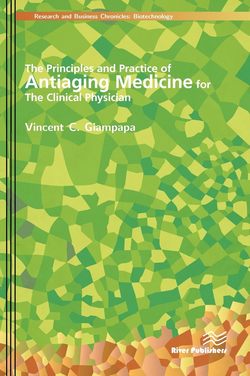Читать книгу The Principles and Practice of Antiaging Medicine for the Clinical Physician - Dr. Vincent C. Giampapa - Страница 12
На сайте Литреса книга снята с продажи.
Introduction Anti-Aging Medicine and Cosmetic Surgery “The Connection”
ОглавлениеVincent C. Giampapa, M.D., F.A.C.S.
Keep your mind open to change all the time. Welcome it. Court it. It is only by examining and reexamining your opinions and ideas that you can progress.
Dale Carnegie
Aesthetic surgeons and physicians are used to observing the effects of aging on the face and body. As a new century dawns, they now have an opportunity to understand and interact with the causes of aging on the most fundamental level.
Since the early 1990s, many physicians have asked me, “How does a plastic surgeon become interested and involved in anti-aging medicine?” Aside from an innate interest in general, it became obvious to me, as I examined my patients for potential cosmetic surgical procedures, that I was witnessing the effects of what was occurring at a more intimate, deeper level: within the cellular structures of their bodies.1 It was this sudden insight that has fueled my desire to understand what caused these effects. More important, I wanted to know what I could do to influence the origins of aging, rather than simply operate on the effects of aging.
Since the early 1990s, I have been intimately involved in the organization and the establishment of a medical society to help disseminate this information to all medical specialties. I and four other physicians met in Chicago and set the groundwork that would establish the American Academy of Anti-Aging Medicine. We defined anti-aging medicine as “the specialty of medicine that seeks to slow age-related disease process to improve both the quality and quantity of life.” At that time, the concept of anti-aging medicine was considered far-fetched and beyond the space of respected science. Despite the cool reception from the medical community, it was an idea whose time had come.
Since then, I have watched this organization grow from its original five members to its present state of over 10,000 physician members in 27 countries.
I have been actively involved in establishing the criteria and information base required by these physicians to help them observe, measure and clinically manipulate the effects of aging on their patients.
Many of these physicians both followed and helped design treatment protocols so that they have become much more efficient and, now, scientifically credible. It has been a time of trial and error, as well as an exercise in learning to think creatively and unconventionally. The advent of technology and improvements in laboratory diagnostics and testing have been the main reasons that anti-aging medicine has finally gained a credible foothold among the other medical specialties.
I have organized and held six international seminars on anti-aging medicine to present the latest breakthroughs in this new specialty. This information has been received with enthusiasm and excitement all over the world.
As a plastic surgeon, I would like to share with you this information and the basic concepts of anti-aging medicine and age management, as they are used at the beginning of the 21st century. They are sure to evolve, but we need no longer wait to have a marked impact on our patients’ lives, as well as on our own. This book is merely an attempt to present the basic concepts. By no means does it cover every detail or complete science of anti-aging medicine.
Nonetheless, I believe that the information contained within this book will be more than enough to convince you of the validity and scientific nature of this new medical specialty and, more important, will provide you with an entirely new viewpoint and approach toward your cosmetic patients.
These are exciting times in science and in aging research. We have taken the giant step of mapping the human genome, the blueprint to create, repair and restore a human being (Diagram 1). Although our level of success can currently be seen as only the outline of this genetic map, there are daily additions to this information, and the understanding of the contents continues to deepen. The growth of anti-aging information is logarithmic, doubling every 2 years.
Since 1990, we have accumulated more information on aging than was obtained over the past 2,000 years. What was once viewed as “alchemy” has become molecular biology, and what was once “magic” is now seen as quantum physics and genetics.
We have also just begun to understand the important impact of our environment on health and longevity and, more specifically, our genes (Diagram 2).1 Why do most people in the world have a life span of 60 to 70 years and a very few make it to 100 years of age or older with relatively good health? I believe we are in a position to actually answer these questions, as well as many others that have arisen (Diagram 3).2
